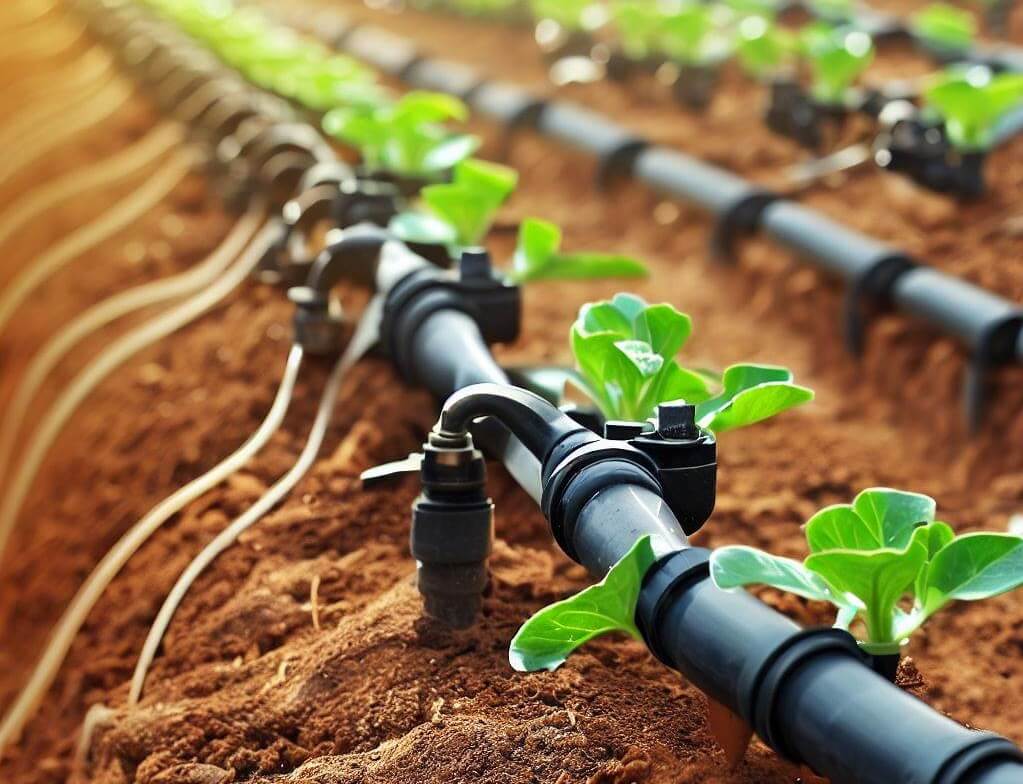Drip Irrigation System
One of the latest systems of irrigation that is becoming popular in regions with a severe lack of irrigation water and salt problems.

In a drip irrigation system, the water and fertilizer are gently and directly applied to the ‘root zone of the plants, in order to reduce the losses due to evaporation and percolation.
Following are the advantages and disadvantages of drip irrigation System
Advantages of Drip Irrigation System
Following are the 8 advantages of drip irrigation system:
1. In drip irrigation system, the water is given directly to the plant so the requirement of water is very low.
2. This system is very effective where the main problem is water scarcity.
3. Loss of water due to evaporation and percolation is negligible.
4. Due to the direct water supply to the plants, the ground surface is the least wetting.
5. Competent for all types of soil, especially for coarse-textured soil.
6. In this system, the growth rate of the crop is maximal.
7. There is no need for land levelling, so the labour cost is less.
8. Reduce the harmful effects of salt.
9. Low labour requirements( So, labour cost is less), as most drip systems are permanent setups.
Disadvantages of Drip Irrigation
Following are the 5 disadvantages of drip irrigation systems:
1. In a drip system, frost protection is not provided
2. Plastic drip-lines and sub-mains pipes may be attacked by rodents and small animals.
3. Regular flushing is required to clean up the soil that collected near the ends of the drip lines.
4. Requires regular supervision.
5. High-skill labour is required to operate and maintain.
Read Also:
Advantages & Disadvantages of Sprinkler Irrigation Method
10 Factors Affecting Duty of Water || Irrigation Engineering